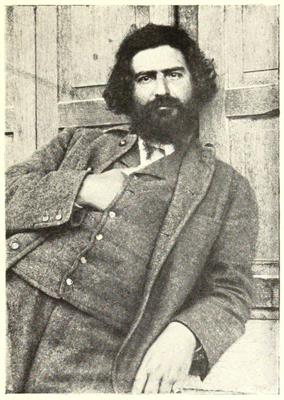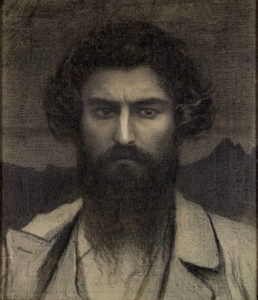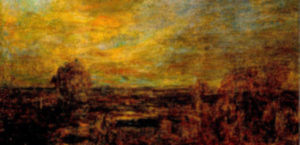
1858 - 1899
Giovanni Segantini

description
Giovanni Segantini was an outstanding Italian and Swiss master of landscape, portrait and plot paintings, who praised the Alps and their inhabitants in his works.
Giovanni was the son of a poor street vendor Agostino Segantini; he early orphaned. In his youth, the artist lived in Milan with his half-sister, who made sure that the 7-year-old boy was deprived of his Austrian citizenship. All his life he lived without citizenship and the passport of any country.
When he was alive, his paintings were already exhibited in Paris and Amsterdam, Milan and Vienna, St. Petersburg and other major art centers in Europe. However, the painter himself could not travel together with his paintings and could not study those masters whom he heard much about, because he never managed to obtain any citizenship and passport in his entire life.
Key ideas:
– After the acquaintance of the artist with Impressionism and pointillism through exhibitions and magazines, his palette becomes colorful, images lose idyllic pathos and an invitation for a deeper visual impression.
– The artist’s landscapes are filled with a gentle mountain light. The artist, having chosen the mountain as the place of work, aspired to climb as high as possible, because he came to the Engadin just for the light. The higher you climb the mountains for painting, the more festive colors you will find, the artist thought. These are the famous clouds, which were called “the snakes of Maloya”, and special shadows. Some paints, although he bought the best from Paris, faded from the furious sun, while others darkened from the thinned air of heights.
– Segantini always – in summer and in winter – painted outdoors, ignoring the workshop he built himself.
– Experimenting with the technique of pointillism and divisionism, Segantini created canvases on motifs from the Alpine, more often rural life. These works are the most significant in his heritage and brought him fame and prosperity. In many ways, his move to Graubünden with its alpine clean air inspired Giovanni Segantini to create paintings in an innovative technique.
1858
1870
1879
1881
1882
1886
1894
1899
The birth of the artist
He worked with artist and decorator Luigi Tettamanzi

Met his future art dealer Vittor Grubisi De Drago

He left Milan and the Academy

The first son Gottardo

Settled in the Alpine farming village of Savonin in the Graubünden area

He worked high in the mountains

The death of the artist

